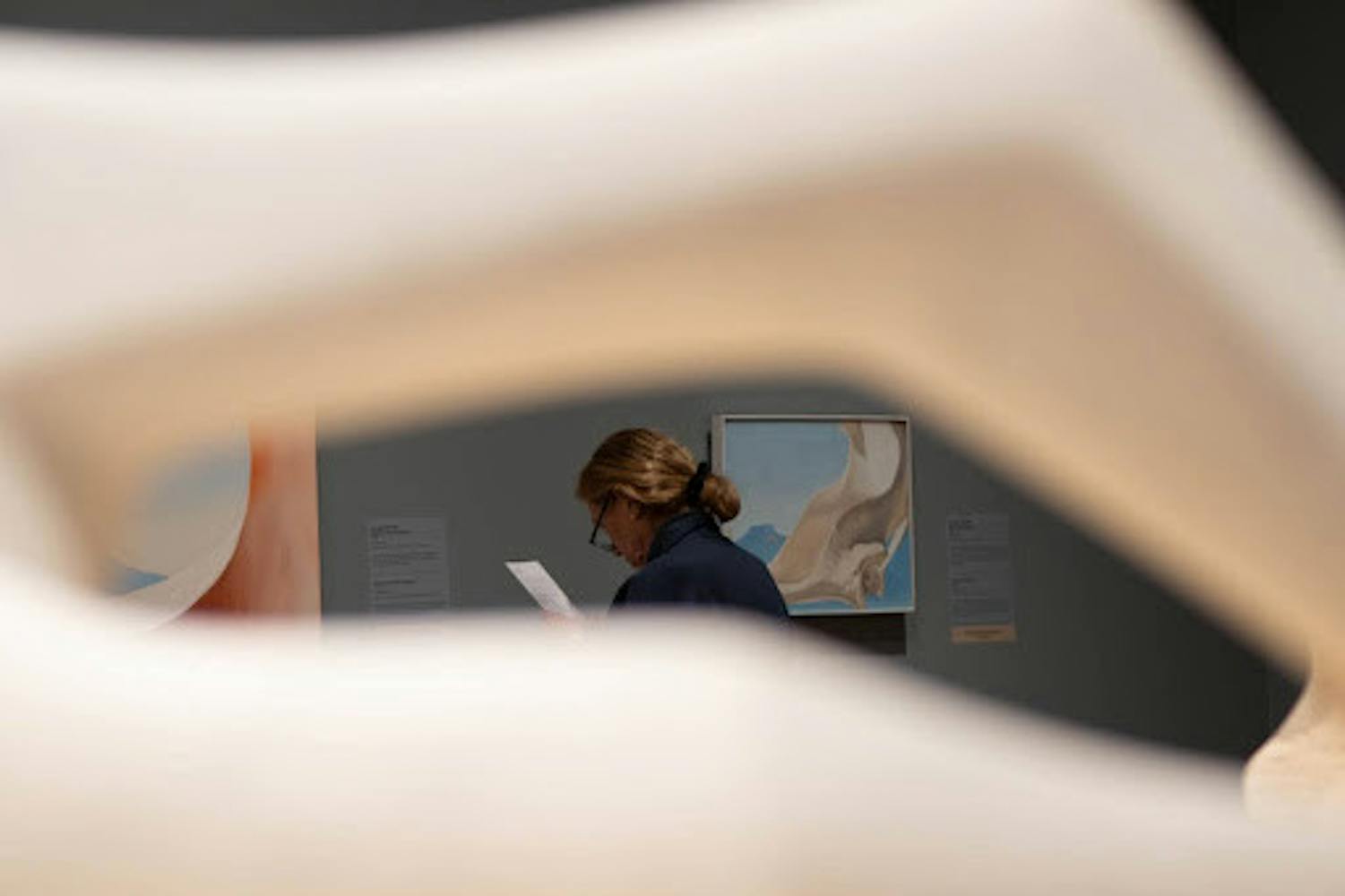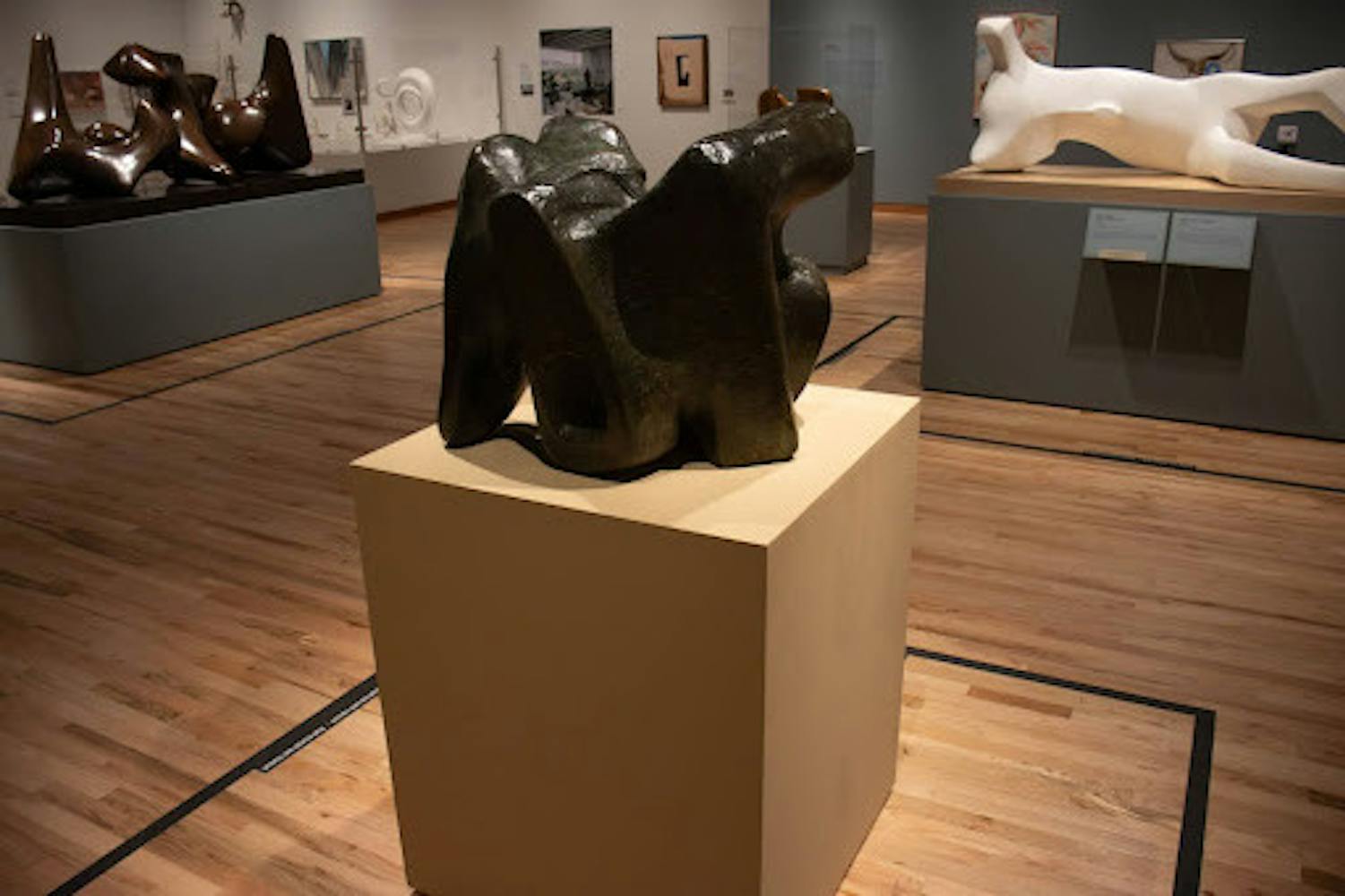Starting in September, The Albuquerque Art Museum has highlighted artists Georgia O’Keeffe and Henry Moore. Although these artists did not work together, the similarities in their work create a cohesive and visually fascinating experience that locals and visitors alike will enjoy.
The museum – in addition to their permanently housed works – frequently builds temporary exhibits to highlight artists, eras or movements in fine art. The rotating exhibits create a refreshing and unique experience for every visit, especially those that offer guests something other than the permanent fine art installations.
O’Keeffe’s paintings are characterized by shapes and patterns that occur in nature. She employed the practices of modernism that are apparent in the way she practices her art. Her works are always a treat to see displayed; not only are they stunning, but their familiarity in terms of the visual representation of the structure and colors of the southwest never fail to impress.
While most may recall her paintings of flowers and still-lives, this exhibit also showcased landscapes, as well as other nature studies that viewers may not have seen before.
The exhibit encourages viewers to take detailed looks at all of the pieces on display, reflecting the artist's experience in searching for inspiration in the nuances of southwestern desert beauty.
In execution, it performed quite well. The museum’s personable and knowledgeable tour guides brought context and definition to each piece to provide a deeper understanding and appreciation – enhancing the experience.
Moore’s work – a fellow modernism practitioner – is focused on three-dimensional imagery. He is a sculptor with works ranging from small figurines to incredible installations. Although I was initially unfamiliar with Moore, the collection of his work the Museum brought together made me wonder why he hasn’t been as culturally appreciated as O’Keeffe.
Alongside completed pieces, the exhibit also showcased prototypes, sketches and incomplete works. Moore’s sculpting process usually began with a sketch, then a small-scale “rough draft” before finally creating what would become the finished piece.
Seeing these pieces for the first time alongside the familiar work of O’Keeffe creates a comfortable, homey environment; the exhibit’s inclusion of real-life references helps to ground the sculptures in natural surroundings.
The most impressive and unique parts of the exhibit are the recreations of each artists’ studio. A studio replica was something I hadn’t seen before, and makes it worth the visit. The faithful recreation of O’Keeffe’s famous studio in Ghost Ranch – where she gathered inspiration from animal bones, landscapes and other characteristics of the desert – includes her final painting – unfinished and left as it was.
O’Keeffe and Moore do not have much in common historically, but their processes and inspirations largely come from the same places. Housing these two artists together created an opportunity to see the different ways southwestern nature can be seen, appreciated and recreated. The pairing didn’t feel forced and I could see visual similarities in their pieces and studios.
O’Keeffe’s piece entitled “Pedernal - From the Ranch I (1956)” experimented with scale and perspective in a way I hadn’t seen before by expanding a small section of a reference.
Get content from The Daily Lobo delivered to your inbox
According to the explanation provided by the museum, she used an animal’s pelvic bone to view a large mesa landscape and painted what she saw through the hole. The finished product is a simple but balanced piece, highlighting the strong color palette of the southwestern environment. Her technique gave the piece an interesting ambiguity, making for both a subjectless “abstract” piece.
Moore’s piece entitled “Bird Basket (1939)” is an abstract, modernist sculpture. One of many found throughout the exhibit, the piece and its series stand out among the others due to its use of colored strings; they add an almost instrumental or otherwise functional element to his work.
Many of Moore’s pieces tended to be more reminiscent of human figures, such as his reclining figure series, but “Bird Basket” and those similar seem to be more inspired by natural rock formations. His pieces carried a more human element into the display than O’Keeffe, which is usually something I gravitate towards.
The way the “human” forms passed as human or abstract depended on what the viewer sees most predominantly. It helped maintain balance between the two very different artists, keeping them from becoming too different to mix as well as they did.
The O’Keeffe and Moore exhibit at the Albuquerque Art Museum is an enthralling collection of passionately crafted artwork, many of them inspired by the natural landscaping and life of the southwest. So far, visitors both local and national have enjoyed their time at the display.
The exhibit will be open until Dec. 31 and is located in the ever-changing second hall of the Albuquerque Art Museum in Old Town.
Sadie Hopkins is a freelance reporter for the Daily Lobo. She can be reached at culture@dailylobo.com










